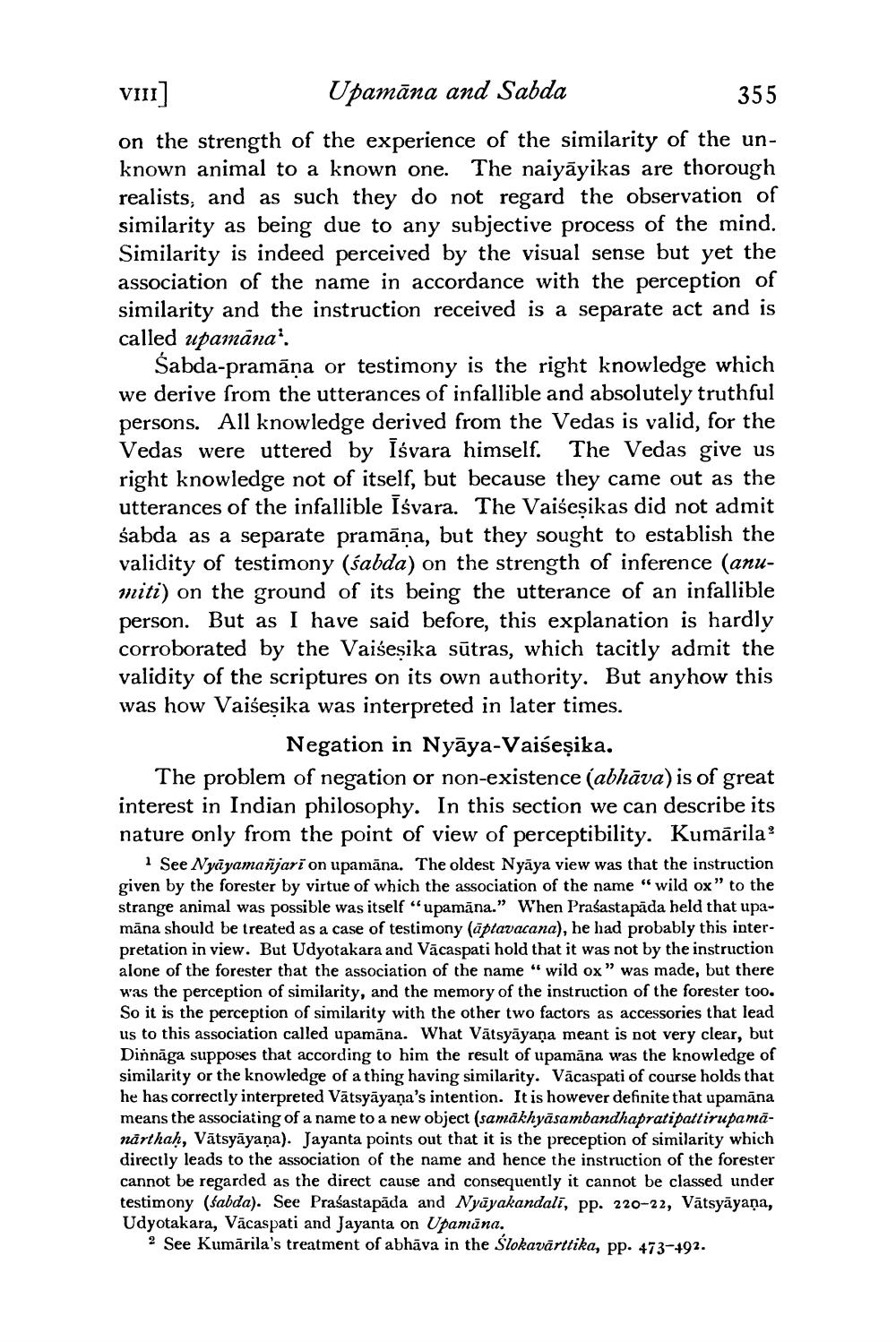________________
VIII]
Upamana and Sabda
355
on the strength of the experience of the similarity of the unknown animal to a known one. The naiyāyikas are thorough realists, and as such they do not regard the observation of similarity as being due to any subjective process of the mind. Similarity is indeed perceived by the visual sense but yet the association of the name in accordance with the perception of similarity and the instruction received is a separate act and is called upamana.
Śabda-pramāṇa or testimony is the right knowledge which we derive from the utterances of infallible and absolutely truthful persons. All knowledge derived from the Vedas is valid, for the Vedas were uttered by Isvara himself. The Vedas give us right knowledge not of itself, but because they came out as the utterances of the infallible Isvara. The Vaiseṣikas did not admit sabda as a separate pramāṇa, but they sought to establish the validity of testimony (śabda) on the strength of inference (anumiti) on the ground of its being the utterance of an infallible person. But as I have said before, this explanation is hardly corroborated by the Vaiseṣika sūtras, which tacitly admit the validity of the scriptures on its own authority. But anyhow this was how Vaiseṣika was interpreted in later times.
Negation in Nyāya-Vaiśeṣika.
The problem of negation or non-existence (abhāva) is of great interest in Indian philosophy. In this section we can describe its nature only from the point of view of perceptibility. Kumārila2
1 See Nyāyamañjarī on upamana. The oldest Nyaya view was that the instruction given by the forester by virtue of which the association of the name "wild ox" to the strange animal was possible was itself "upamana." When Prasastapāda held that upamāna should be treated as a case of testimony (aptavacana), he had probably this interpretation in view. But Udyotakara and Vacaspati hold that it was not by the instruction alone of the forester that the association of the name "wild ox" was made, but there was the perception of similarity, and the memory of the instruction of the forester too. So it is the perception of similarity with the other two factors as accessories that lead us to this association called upamana. What Vātsyāyaṇa meant is not very clear, but Dinnaga supposes that according to him the result of upamana was the knowledge of similarity or the knowledge of a thing having similarity. Vacaspati of course holds that he has correctly interpreted Vätsyāyaṇa's intention. It is however definite that upamāna means the associating of a name to a new object (samākhyāsambandhapratipattirupamānārthaḥ, Vatsyāyaṇa). Jayanta points out that it is the preception of similarity which directly leads to the association of the name and hence the instruction of the forester cannot be regarded as the direct cause and consequently it cannot be classed under testimony (śabda). See Prasastapāda and Nyāyakandali, pp. 220-22, Vātsyāyaṇa, Udyotakara, Vacaspati and Jayanta on Upamana.
2 See Kumārila's treatment of abhava in the Ślokavārttika, pp. 473-492.




